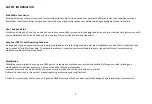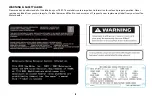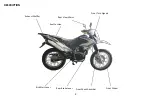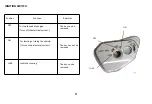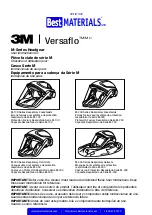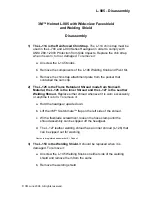
•
Motorcycle boots with non-slip soles to help protect your feet and ankles.
•
Leather gloves to help protect your hands.
•
A motorcycle riding suit or jacket for comfort as well as protection.
Bright-colored and reflective clothing can help make you more noticeable in traffic. A void loose clothes that could get caught on any part
of your motorcycle.
Rider Training
Developing your riding skills is an on-going process. Even if you have ridden other motorcycles, take time to become familiar with how this
motorcycle works and handles. Practice riding the motorcycle in a safe area to build your skills. Do not ride in traffic until you get
accustomed to the motorcycle's controls, and feel comfortable with its size and weight.
SAFETY INFORMATION
Helmets and Eye Protection
A h
elmet is your most important piece of riding gear because it offers the best protection against head injuries. A helmet should fit your
head comfortably and securely. A bright-colored helmet and reflective strips can make you more noticeable in traffic.
An open-face helmet offers some protection, but a full-face helmet offers more. Regardless of the style, look for a DOT (Department of
Transportation) sticker in any helmet you buy (USA only). Always wear a face shield or goggles to protect your eyes and help your vision.
Warning
Not wearing a helmet increases the chance of serious injury or death in a crash.
Be sure you and your passenger always wear a helmet, eye protection, and other protective apparel when you ride.
On-Road Gear
In addition to a helmet and eye protection, we also recommend:
33






